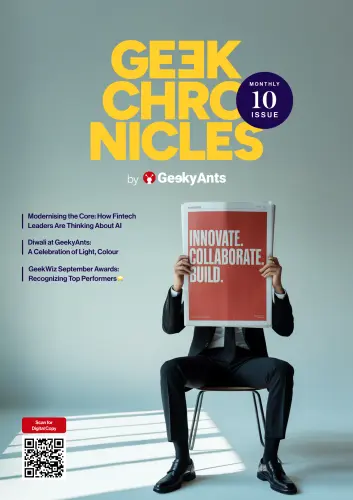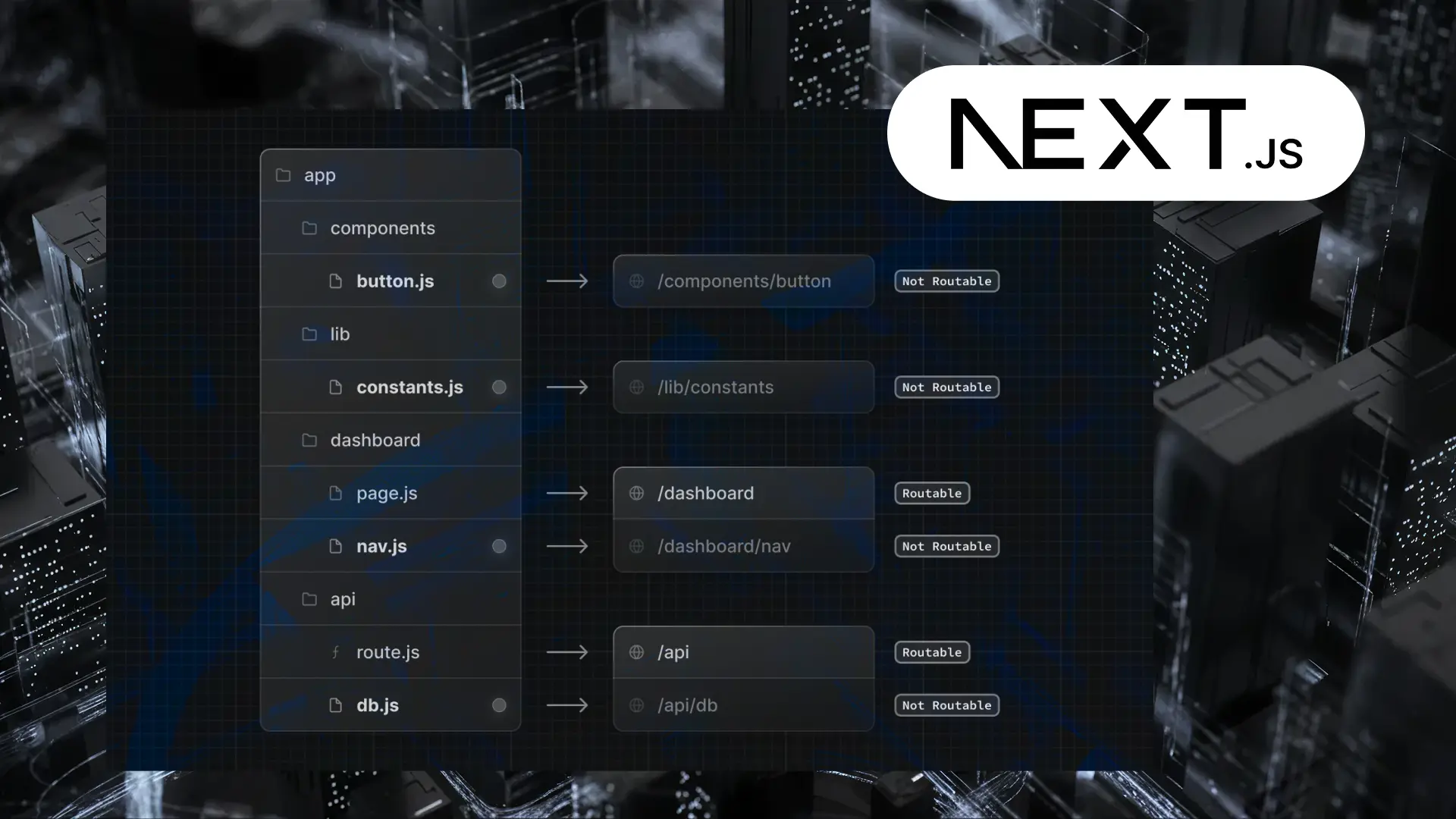Table of Contents
Outsourcing vs In-House App Development: Cost Analysis Guide
Author

Subject Matter Expert


Date

Book a call
Outsourcing vs In-House App Development: Cost Analysis Guide
In-house development offers deep control but demands higher costs, longer hiring cycles, and infrastructure investment—ideal for complex, IP-sensitive products. Outsourcing delivers faster execution, lower costs, and flexible scalability—perfect for MVPs, market testing, and rapid digital acceleration. The smartest approach is goal-aligned execution—choosing a model that fits your product vision, timeline, and long-term cost strategy.Key takeaways:
App development directly impacts how efficiently a business can scale, innovate, and compete. With the global application development market projected to cross $255 billion by 2024, and U.S. businesses contributing over $70 billion annually, the pressure to make the right development decision has never been higher (Precedence Research).
For most companies, the decision comes down to two models: building an in-house team or partnering with an external development firm. Each path carries implications—not just for cost, but for product velocity, technical control, talent access, and long-term ownership.
This blog analyzes the real-world cost structures, advantages, trade-offs, and strategic fit of outsourcing versus in-house development for U.S. businesses.

What Is In‑House App Development?
In‑house app development means building and sustaining your internal development team—developers, UX/UI designers, QA engineers, DevOps specialists, and PMs—embedded entirely within your organization. This model offers full visibility into all stages of the SDLC, from agile planning to sprint execution and CI/CD pipelines—something only hinted at in competitors’ content. Your team champions everything—from architecture design, API governance, to cloud infrastructure setup. Proximity accelerates feedback loops: A SaaS firm retooled its customer-support dashboard 18 times within 3 months, thanks to developers sitting alongside support teams—eliminating bureaucratic handoffs. Continuous Integration/Continuous Deployment (CI/CD) pipelines, automated testing, code reviews, and sprint retrospectives are fully under your governance. This enables faster mean time to recovery (MTTR) and a predictable release cadence. A mid-level U.S. developer commands $100K–130K, while niche roles like cloud architects or AI engineers can hit $150K+. With benefits, 20–30% overhead is not uncommon—pushing true compensation to $180K+ per person per year. SaaS licenses (e.g., JIRA, GitHub, AWS), PCs, dev/test servers, and office space can reach $15K–25K per head annually, according to SolutionAnalysts. Developer churn is high—average tenure hovers around 2 years. Hiring pipelines often span 4–6 months, with costs accumulating from recruiter fees, interviews, and lost productivity. Replacing a mid-level dev can consume 20–30% of their salary annually.Technical and Operational Dimensions
1. End-to-End Technical Ownership
2. Workflow Agility & Iteration Velocity
3. Integrated DevOps & Quality Control
Real-World Cost Anatomy
1. Salaries & Total Compensation
2. Infrastructure & Tooling
3. Recruitment & Attrition Risk
Who Benefits Most from In-House Development?
Companies where software is core—such as SaaS, AI-fueled platforms, FinTech, or proprietary healthcare tools—gain maximum strategic value by owning their IP and workflows from day one. If you are launching daily or weekly sprints with rapid feature toggles, being co-located (even virtually) accelerates ideation and deployment.1. Tech-Intensive Businesses
2. High-Frequency Iteration Products
3. Regulated Industries
Sectors like healthcare, finance, or government demand tight control over data and documentation. An internal team ensures adherence to HIPAA, FDA, or SOC 2 without third-party oversight.
What Is Outsourcing App Development?
Outsourcing app development involves hiring an external team—offshore, nearshore, or onshore—to handle your core software build, rather than building and managing the team internally. From full project delivery to niche skill augmentation, outsourcing adapts to specific needs and timelines.Models & How Outsourcing Works
1. Diverse Engagement Models
Outsourcing typically offers three flexible engagement models, each tailored to different business needs. The Time & Materials model is ideal for projects with evolving requirements, where you pay based on the actual hours worked—offering flexibility and adaptability as the scope shifts. In contrast, the Fixed Price model works best when deliverables are clearly defined upfront, allowing for a set budget and timeline with minimal surprises. For longer-term partnerships, businesses often opt for Dedicated Teams, where a group of developers works exclusively on your project while being managed by the vendor—striking a balance between control and scalability.
2. Access to Global Talent at Scale
With IT outsourcing valued at $66.5B within a $92.5B global market, outsourcing grants access to specialized skills—from AI to cloud-native engineering—that might be scarce locally (clariontech.com).
3. Speed-to-Market Advantage
Outsourced teams frequently begin work within weeks, compared to internal hiring, which can stretch over months. This agility enables organizations to respond swiftly to product opportunities.
Strategic Cost & Resource Benefits
1. Lower Labour Costs
U.S. junior developers average $60K–80K/year, while counterparts in Eastern Europe or India operate around $20K–30K, delivering significant savings without compromising quality.
2. Variable Cost Structure
Outsourcing shifts fixed overhead into OPEX—no office space, infrastructure, or benefits to sustain. You pay only for the required output.
3. On-Demand Specialization
Scale up with DevOps, cybersecurity, or niche mobile expertise exactly when needed, then scale down—avoiding underutilized internal staff (clariontech.com).
When Is Outsourcing the Optimal Solution?
According to SolutionAnalysts, outsourcing shines when: You are building an MVP or pilot and need speed without long-term commitments. Your internal team lacks domain-specific skills—outsourcing plugs the gap swiftly. You are managing cyclical or surge-based projects that fluctuate. 24/7 support or development across time zones is required, enabling round-the-clock delivery Criteria In-House Development Outsourced Development Team Structure Internal full-time team External vendor teams (offshore/nearshore) Cost (Annual/Per Dev) $120K–$180K (includes benefits & infrastructure) $30K–$50K (no infra or benefits) Scalability Slower (limited by internal hiring capacity) Fast—scale teams on demand Speed to Start 3–6 months to hire and onboard 1–3 weeks to get started Control & Oversight High—daily syncs, deep cultural alignment Moderate—requires strong project governance Access to Specialized Talent Limited to local hiring or contract consultants High access to global talent pools with niche skills Time Zone Overlap Full overlap with business hours Partial overlap depending on location Long-Term Ownership / IP High—code and product fully owned in-house Must be contractually enforced with IP clauses Compliance Management Full internal responsibility (HIPAA, SOC 2, etc.) Shared responsibility—due diligence required Infrastructure & Tools Owned and maintained internally Managed by the outsourcing partner Best Fit For Long-term, core product teams with strategic focus MVPs, rapid launches, cost-sensitive or exploratory buildsIn-House vs. Outsourced App Development

Kunal Kumar
Chief Operating Officer, GeekyAnts
In-House vs Outsourcing: Cost Breakdown
In-house app development means full ownership of people, infrastructure, and delivery pipelines. But that ownership comes at a premium. In the U.S., a mid-level developer typically earns between $100 and $150 per hour. For senior engineers or those with specialized skill sets (like React Native + AWS + CI/CD), the rate can climb to $180–200/hr. When calculated over a standard 2,000-hour work year, that’s $200,000+ per head—before benefits. Building an in-house team involves more than just salaries. Recruitment alone can take 45 to 90 days, with each new hire costing an additional $5,000 to $20,000 when factoring in background checks, technical evaluations, and signing bonuses. Beyond talent acquisition, companies must also invest heavily in infrastructure—from development licenses and staging servers to testing devices, security tools, and cloud services—which typically add $10,000 to $25,000 per engineer annually. On top of that, overhead costs such as payroll taxes, insurance, office space (even in hybrid models), HR support, and team management can drive the true cost per developer to nearly 1.5 times their base salary, making in-house development a significant long-term financial commitment. For a mid-complexity mobile or web app (MVP to V1), you are looking at 1,500–2,500 development hours. At U.S. in-house rates, that translates to $150,000 to $300,000+ for engineering labor alone—not counting ongoing support, testing, and deployment infrastructure. What you gain is deep technical alignment, instant access to cross-functional collaboration (especially if design, QA, and product are also in-house), and full lifecycle control. But the financial runway required is long, and the time to build the right team can slow go-to-market velocity.Cost Breakdown: In-House vs Outsourcing in the U.S.
Hourly Rate Reality:
Hidden Financial Layers:
Total Project Cost Estimate:
Key Trade-Off:
Outsourcing App Development Costs — How Far Can Your Budget Go?
Outsourcing app development offers flexibility, speed, and cost leverage. While some associate outsourcing with simple cost-cutting, the reality is more strategic: you're paying for execution capacity without the overhead of ownership. Region Hourly Rate (USD) Talent Specialization Key Advantage Southeast Asia & India $20 – $35/hr Mobile & web developers with large talent availability Cost-effective, large resource pool Eastern Europe $30 – $50/hr Full-stack engineers with strong English & technical skills Quality + communication balance Latin America $35 – $60/hr Cross-platform developers, DevOps, product engineers Time zone alignment with U.S. clients1. Global Rate Benchmarks:
2. Cost Efficiency by Design:
Outsourcing removes many of the operational barriers associated with in-house hiring. There are no lengthy recruitment cycles or onboarding delays, as experienced teams can be assembled and activated within 1 to 3 weeks. Additionally, there’s no need for infrastructure investment—cloud services, staging environments, testing pipelines, and collaboration tools like JIRA, GitHub, and Figma are all managed by the outsourcing partner. Most importantly, the model offers built-in flexibility, allowing you to scale teams up or down based on project demands without the burden of long-term commitments.3. Total Project Cost Estimate:
A functional MVP developed by an offshore team can cost between $30,000 and $90,000, depending on complexity, platform (iOS/Android/web), and feature set. Full product builds with backend, admin dashboards, and analytics can range from $100,000–$150,000—still often 50–70% cheaper than in-house builds.4. Where It Wins:
Outsourcing accelerates speed-to-market, reduces fixed costs, and unlocks global expertise in mobile, cloud, AI/ML, or UI/UX—without scaling your internal org.
In-House vs. Outsourcing: Cost Breakdown That Matters
Category In-House Development (U.S.) Outsourced Development (Global) Hourly Rate (per dev) $100–200/hr $20–60/hr Time to Build Team 2–4 months (recruiting, onboarding, training) 1–3 weeks (team setup and kickoff) Cost per MVP $150,000–$300,000+ $30,000–90,000 Infrastructure & Tooling $10K–$25K annually per dev Included in vendor pricing Fixed vs Variable Cost Fixed OPEX (salaries, HR, infra) Variable OPEX (pay-per-sprint, flexible contracts) Scalability Limited to hiring bandwidth and budget On-demand; scalable from 2 to 20+ engineers in weeks Best Use Case Long-term, IP-sensitive, complex product with ongoing iterations MVPs, cost-sensitive builds, pilot projects, market expansions
What Are the Pros and Cons of In-House & Outsourced App Development?
When evaluating development models, the decision isn’t binary—it’s contextual. Each model brings distinct advantages and limitations depending on business goals, product maturity, and available resources. Here's a detailed breakdown to guide the decision: Pros Cons Full Technical Control – Greater influence over code quality, tooling, and release cadence. High Cost – Salaries, benefits, infrastructure, and overhead add up quickly. Cultural Alignment – Developers understand the company’s goals, tone, and customer expectations. Slow Hiring Process – Onboarding top talent can take months. Tighter Cross-Functional Collaboration – Easier integration with design, QA, and product teams. Scalability Constraints – Difficult to ramp up/down quickly based on project cycles. Direct Ownership of IP – Minimizes risk around proprietary logic, code, or architecture. Resource-Heavy – Internal teams demand constant management, retention, and upskilling. Ideal for Long-Term Builds – Better suited for ongoing, evolving product ecosystems. Limited Tech Diversity – Often lacks access to niche or emerging skills without external training. Pros Cons Cost Efficiency – Access to global talent at lower hourly rates. Variable Quality – Requires careful vendor vetting and contract clarity. Faster Time-to-Team – Assemble full teams in weeks, not months. Less Day-to-Day Control – Progress relies on structured communication and trust. Scalable on Demand – Expand or reduce team size as per project phases. Time Zone & Cultural Differences – May require adaptation in workflows. Access to Specialized Talent – Quickly bring in experts for AI, DevOps, Security, etc. Compliance & Security Risk – Must enforce data protection, IP rights, and audits. Great for MVPs and Pilots – Launch products quickly and validate ideas. Integration Friction – Requires upfront planning for CI/CD, QA, and handoffs.In-House App Development: Pros and Cons
Outsourced App Development: Pros and Cons
Outsourced vs In-House Development: When to Choose Each (Real-World Scenarios)
Choosing between in-house development and outsourcing is not one-size-fits-all—it depends on your product maturity, budget, timeline, and IP sensitivity. A hybrid model often emerges as the optimal solution, combining in-house strategic oversight with outsourced execution speed. Long-Term Core Products: Products that form your company’s primary revenue stream or handle sensitive data (e.g., healthcare apps requiring HIPAA compliance). High-Frequency Iteration: Products needing frequent feature updates where direct team collaboration accelerates innovation. Deep Integration Needs: Apps tightly coupled with internal legacy systems or proprietary hardware/software. Example: MVPs and Market Testing: Ideal for startups validating their product concept without heavy initial investment. Skill Gaps & Specialized Tech: When expertise in AI, blockchain, or cross-platform frameworks is required quickly. Tight Deadlines or One-Time Projects: Outsourced teams can start in weeks rather than months. Example: Hybrid combines the strategic control of in-house teams with the execution agility of outsourcing. Strategic Core + Outsourced Innovation: Keep architecture and product vision in-house while leveraging external specialists for feature extensions, UI/UX modernization, or backend scaling. 24/7 Development Coverage: In-house handles daytime sprints, while outsourced teams work off-hours, accelerating release cycles.The Decision Landscape
1. When to Choose In-House Development
A healthcare startup building a HIPAA-compliant internal communication platform chose an in-house team to ensure strict regulatory adherence and maintain full IP ownership.2. When to Choose Outsourcing
A retail e-commerce startup outsourced its MVP development to reduce cost by 60% and achieve market validation within eight weeks, enabling it to secure funding before scaling internally.3. When to Choose a Hybrid Model
Example:
A fintech firm retained an in-house core engineering team but outsourced front-end mobile app development to accelerate a cross-platform rollout—achieving compliance and time-to-market goals simultaneously.
App Development Decision Map
Scenario Recommended Approach MVP or market validation Outsourcing Core product with sensitive data/IP In-house Specialized tech stack needed fast Outsourcing Rapid scaling for seasonal demand Outsourcing or Hybrid Frequent iteration & daily releases In-house Balanced control & speed Hybrid 24/7 development cycles Hybrid The smartest choice is rarely absolute—align your development model with your business goals, risk tolerance, and growth stage. Many successful companies use hybrid strategies, keeping IP-sensitive areas internal while outsourcing execution-heavy tasks to accelerate innovation and reduce time-to-market.
Real-World Strategies & Use Cases
Gain clarity on when to build internally or partner externally through real-world examples—from fintech revolutions to healthcare innovations.

Use Case: A global broking firm needed real-time cross-platform synchronization between its mobile app and a new Progressive Web App. Example: A U.S. e-commerce startup engaged an offshore team to build its initial mobile MVP. Example: A U.S.-based healthcare client needed a HIPAA- and SOC 2–compliant internal communication tool. Example: A global payment platform partnered with GeekyAnts to develop mobile and web interfaces alongside administrative tools. Reference: Appinventiv’s work for KFC across seven markets — building mobile ordering, self-pickup, and loyalty features. Use Case Model Used Why It Worked Real-time fintech apps Hybrid (in-house + outsourced) Shared components, shared risk, secure, fast time-to-market E-commerce MVP Outsourced Fixed budget, fast iteration, validated demand before scaling Healthcare tool In-house Regulatory governance, IP control, long-term extensibility Global payments Fully outsourced Leverage global expertise at scale, reduced internal management burden QSR multi-market apps Outsourced Market-specific features, distributed launches, centralized project control1. FinTech: Speed & Security through Hybrid Builds
Approach: GeekyAnts integrated Flutter with React for the PWA, maintained secure WebSockets for live updates, and enabled APIs to share logic between apps.
Outcome: The PWA launched ahead of schedule, delivering near-native performance and secure financial data handling. This in-house–outsourced hybrid yielded robust performance without duplicating efforts—precisely aligning with fast-moving fintech needs.2. Retail & Consumer Apps: Outsourced MVP for Market Testing
Strategy: Within 8 weeks, the vendor delivered core features (shopping cart, payment integration, notifications).
Result: The company gained early market insights and cut costs by ~60% compared to an in-house build—saving time, budget, and proving product-market fit before committing to internal teams.3. Healthcare: Compliant App Built by In-House Team
Approach: Using internal staff already versed in compliance protocols, the company handled sensitive data governance, CI/CD setup, and automated testing directly within their infrastructure.
Result: The native tool launched on schedule, granting full internal ownership, auditability, and long-term control—key for future iterations and clinical integrations.4. Mobile Web & Global Payments: Outsourcing for Scale
Approach: The outsourced team handled front-end development, AWS-powered backend hosting, caching, and automated deploys with CI/CD.
Result: The platform processed 400 million global transactions in the first year, showing major operational scale and performance improvements.5. F&B / QSR (Quick Service Restaurants): Multi-Market App Rollout
Outcome: The outsourcer launched seven market-specific versions in one year, boosting conversions and in-app revenue—a scalable playbook for brands aiming at aggressive digital expansion.
While initial app development costs often dominate budget discussions, the true financial impact unfolds over the full product lifecycle. What appears predictable on paper can quietly escalate through overlooked or underestimated operational realities. These hidden costs can erode margins, delay growth, and strain internal resources long after the code is shipped. Decisions made to ship faster—like hardcoded shortcuts, non-scalable architecture, or skipped refactoring—create technical debt. Left unmanaged, this debt accumulates interest in the form of system instability, rework, and costly rewrites. When teams finally address it, refactoring costs can consume 20–40% of the original development budget, often requiring a dedicated engineering cycle just to stabilize the product. As market demands evolve, new feature requests, integrations, or UX changes emerge. These additions—often initiated outside the original scope—require design rework, backend adjustments, and QA updates. Over time, scope creep can inflate project timelines by 15–30%, especially if requirements aren’t tightly managed or versioned through a change control system. Developer turnover is inevitable. Each departure initiates a cycle of hiring, onboarding, and knowledge transfer. For in-house teams, the replacement cost of a single developer often reaches 20–30% of their annual salary, considering recruiting fees, lost productivity, and onboarding lag. Multiply that across a team, and retention becomes not just a cultural issue—but a compounding financial one. Your infrastructure does not scale linearly—it compounds. As your app gains users and complexity, hosting costs, monitoring systems, API gateways, third-party integrations, and licensing fees grow incrementally year-over-year. Without proactive infrastructure budgeting, organizations often face unexpected spend spikes tied to feature rollouts or user surges. In regulated industries—like healthcare, finance, or government—compliance is non-negotiable. HIPAA, SOC 2, and GDPR requirements introduce layers of documentation, security protocols, and audit readiness. These efforts can add 5–15% to your engineering budget on an annual basis, especially when external audits or legal reviews are involved. These are not one-time costs—they are recurring, expanding with scale and data exposure.1. Technical Debt & Deferred Maintenance
2. Scope Creep & Feature Drift
3. Training, Turnover & Onboarding
4. Infrastructure Inflation
5. Compliance, Audits & Quality Oversight
Regulatory & Compliance Factors
For U.S.-based businesses, especially those operating in healthcare, finance, education, and e-commerce, compliance is not optional—it’s a legal and operational imperative. Yet, it's often overlooked during early-stage product development decisions. Whether you build in-house or outsource, ignoring compliance early on can lead to costly audits, fines, delayed launches, or loss of customer trust. Apps handling patient data—EHRs, appointment systems, telemedicine platforms—must comply with HIPAA (Health Insurance Portability and Accountability Act) and HITECH (Health Information Technology for Economic and Clinical Health Act). This includes strict mandates around data encryption, access control, audit logging, breach notification, and role-based access to Protected Health Information (PHI). In-House Teams must maintain constant documentation, training, and internal audit readiness. Outsourcing Partners need to sign BAAs (Business Associate Agreements) and provide proof of HIPAA-compliant architecture and workflows. FinTech apps, trading platforms, and neobanking solutions are governed by SOX (Sarbanes-Oxley), GLBA (Gramm-Leach-Bliley Act), and PCI-DSS (Payment Card Industry Data Security Standard) if payment processing is involved. SOX demands full audit trails for financial transactions and app logic affecting reporting. PCI-DSS compliance is essential for any app storing, processing, or transmitting cardholder data—and violations can lead to six-figure penalties. CCPA (California Consumer Privacy Act) governs how customer data is collected, stored, and deleted for California residents—affecting virtually any U.S. business. COPPA protects minors under 13—critical for edtech and family-facing products. FERPA applies to educational institutions and tech platforms that handle student records. Failing to bake these into your app architecture from day one can force expensive retrofits down the line.Healthcare (HIPAA, HITECH)
Finance & FinTech (SOX, GLBA, PCI-DSS)
Data Privacy (CCPA, COPPA, FERPA)
Why Compliance Affects Development Models
Factor In-House Development Outsourced Development Regulation Awareness Built-in via internal legal/IT/security teams Must be explicitly scoped and contractually enforced Audit Trail Ownership Controlled by internal DevOps and engineering pipelines Must be integrated into outsourced delivery processes Security Certifications Internal policies must align with SOC 2, ISO 27001, etc. Vendor must present proof of compliance or undergo 3rd-party audits Data Residency & Sovereignty Easier to control when infra is owned Must confirm cloud region choices and backup protocols Liability Entirely held by company Shared—but only if covered by detailed SLAs, NDAs, and compliance clauses
Why Choose GeekyAnts as Your Development Partner
GeekyAnts delivers full-cycle product solutions—from MVP to scale—across design, development, AI/ML, and QA. We're a partner that empowers U.S. and global businesses to build robust, compliant, and scalable digital platforms. For a North American payment processor, we built a mobile and web application featuring an admin panel, multi-currency transactions, and real-time monitoring. The platform processes over 400 million transactions annually with 120K+ active users across multiple regions We created a mortgage planner and loan optimization tool using React Native and TypeScript under a fixed-cost model—delivering seamless authentication, fingerprint login, and dynamic dashboards in just 4 months. We built a React Native mobile app connecting caregivers and clinicians, enabling virtual check-ins, personalized support, and 24/7 accessibility—streamlining care delivery for families with medically complex children. Healthcare – IoT Monitoring for Athletes Multi-Disciplinary Teams: Dedicated squads for each phase—product strategy, UI/UX, AI/ML logic, engineering, QA. Clear, Agile Processes: Daily stand-ups with Jira for task tracking, GitHub for code reviews, and Figma for real-time visual feedback. Flexible Engagement Models: Whether you need MVP support, long-term offshore teams, or embedded staff augmentation, the model adapts to fit your project's lifecycle. Fintech Platforms: Delivered scalable, secure systems driving up to 350K app downloads and sustaining 4K+ monthly transactions. Healthcare Innovations: Deployed apps supporting chronic care, telehealth, and compliance—delivering measurable efficiency and engagement improvements. Global Processing Systems: Enabled a robust admin interface for global payments with real-time controls and market expansion capabilities. Compliance-First Mindset: Architects skilled in HIPAA, GDPR, and PCI standards using Figma and CI/CD to embed auditability. Transparent Reporting: Weekly demos, sprint retrospectives, and logs synchronized via Jira and GitHub—end-to-end visibility. Scale Without Surprises: From 2-person MVP teams to 20+ engineer squads, we expand on demand without fixed overhead.Proven Expertise Across Verticals
Fintech – Global Payment Processing App
Fintech – Loan Optimizer for Sprive (UK)
Healthcare – Accessible Care for Medically Complex Children
Our team developed Flutter-based clinician and athlete apps to track hydration in football players, integrating IoT sensors and custom data visualization tools—enhancing live monitoring and proactive care.Comprehensive, Transparent Delivery
Measurable Outcomes with Real ROI
Why U.S. Clients Trust Us
Local Impact, Global Reach: We’ve partnered with U.S. companies to launch products domestically and globally, ensuring time-zone alignment and localized UX.
Ready to Transform Your Product?
Launch fast. Scale smart. Build with confidence. Let's discuss how GeekyAnts can accelerate your roadmap, optimize costs, and deliver market-leading results. Whether you are a founder looking to build fast, a CTO expanding product capabilities, or a CIO focused on long-term value, the choice between in-house and outsourced development is not binary—it is a strategic lever. In-house teams offer control and cultural depth, but come with higher cost and slower scalability. Outsourcing unlocks execution speed, cost efficiency, and on-demand access to global expertise. For U.S. businesses navigating complex markets and tight timelines, the real edge comes from aligning your development model with your business goals—while staying mindful of hidden costs, compliance obligations, and long-term ownership.
Book your free consultation today.Final Takeaway: Make Cost a Strategic Advantage, Not a Compromise
FAQs
Outsourcing allows companies to access specialized talent quickly, reduce operational overhead, and accelerate project delivery without building full-time teams. It’s especially useful for startups and enterprises looking to validate an MVP, manage fluctuating workloads, or scale products rapidly while staying cost-efficient. Offshore Outsourcing: Partnering with teams in distant countries to leverage cost savings and diverse talent. Nearshore Outsourcing: Collaborating with teams in nearby regions for better time-zone alignment and cultural compatibility. Onshore Outsourcing: Working with external teams in the same country, ensuring easier communication and compliance while still reducing overhead costs. Staff Augmentation: Hiring external developers to work as an extension of your internal team on specific projects. Look for companies with a proven track record, strong client reviews, and experience in your required tech stack. Verify certifications, request case studies, and ensure they follow secure coding practices and offer clear communication models. Always start with a small pilot project to evaluate their delivery quality before committing long-term. Recruitment & Training: Hiring and onboarding take time and resources. Employee Benefits: Health insurance, paid leave, and retirement plans add to salary costs. Infrastructure: Hardware, software licenses, and workspace expenses. Turnover & Downtime: Replacing team members can cost 20–30% of their annual salary. In-house teams provide full control and direct collaboration but are slower to scale and more expensive. Outsourced teams deliver faster execution and specialized skills at lower costs but require strong project governance to maintain alignment and quality. Outsourcing can reduce development costs by 50–70% compared to U.S. in-house teams, depending on the project scope and the region chosen. This is mainly due to lower labor rates, zero infrastructure overhead, and faster time-to-market. Yes. Hiring full-time employees involves salaries, benefits, infrastructure, and long-term commitments. Outsourcing offers a pay-for-what-you-need model, making it significantly cheaper for short-term or specialized projects. Check for experience in your industry, verify references, and review portfolio quality. Look for transparent pricing, agile communication processes, and strong security policies. Platforms like Clutch or GoodFirms can help you identify top-rated offshore partners with verified client reviews.1. Why should companies outsource software development?
2. What are the most common types of app development outsourcing?
3. How to find the best offshore mobile app development partner?
4. What hidden costs come with in-house teams?
5. What’s a real-world difference between in-house and outsourced development?
6. How much cost can be saved through outsourcing?
7. Is outsourcing cheaper than hiring?
8. How do I find a reliable offshore development partner?
Dive deep into our research and insights. In our articles and blogs, we explore topics on design, how it relates to development, and impact of various trends to businesses.





